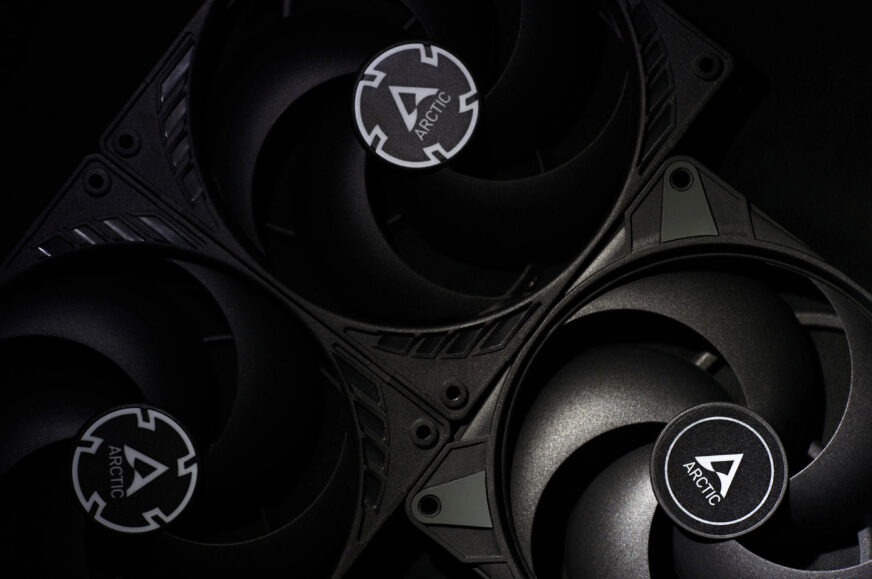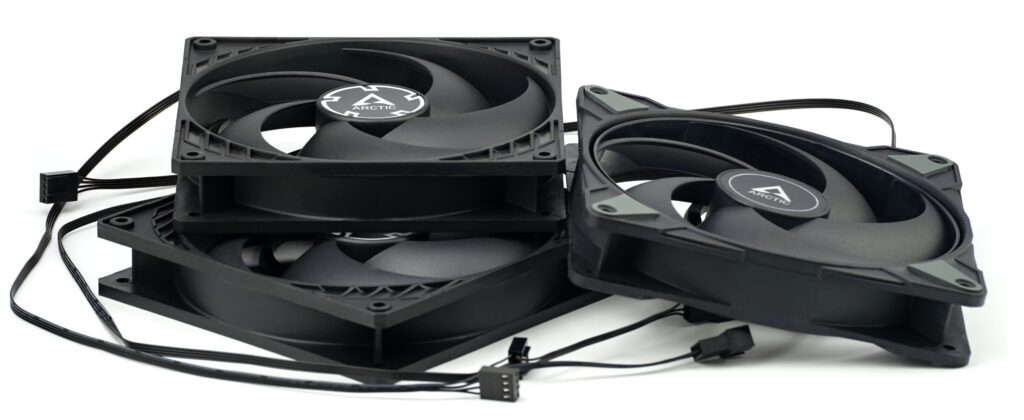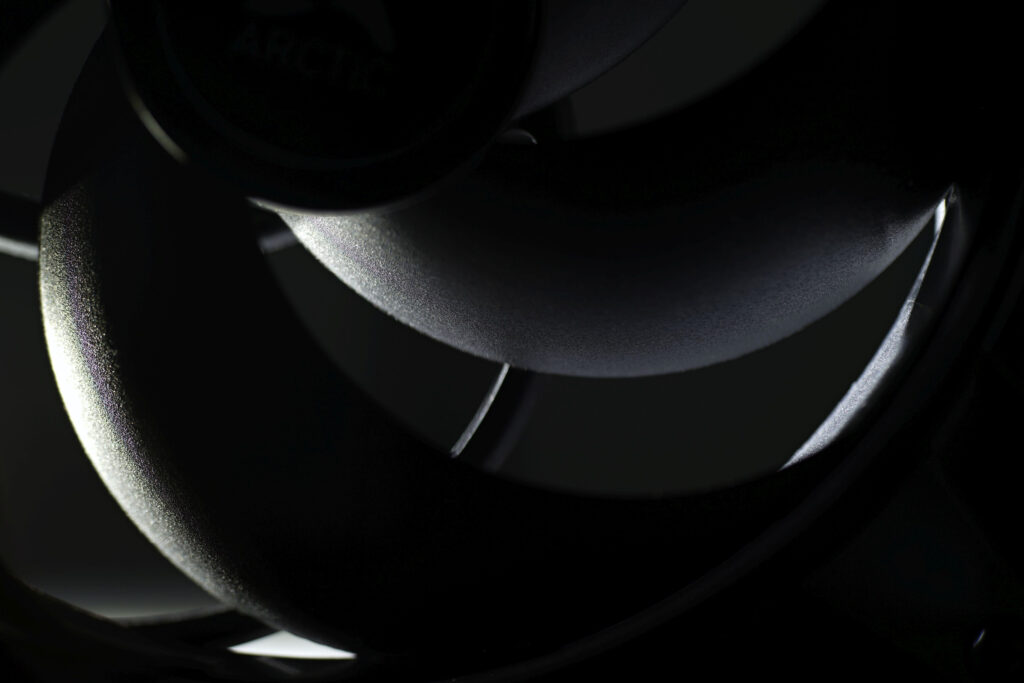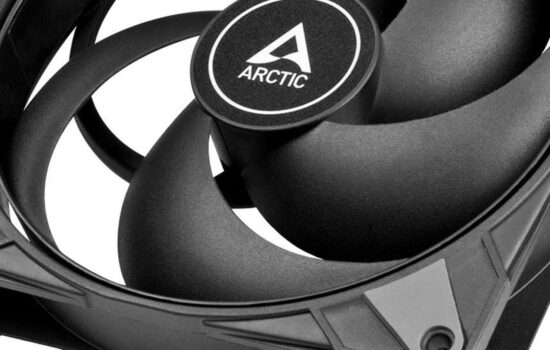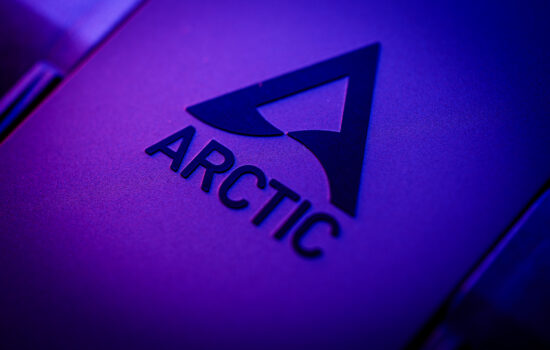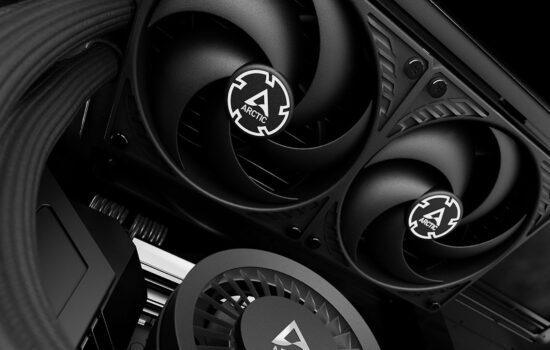Arctic P14 (PWM PST, CO PWM PST and Max)
Slowly but surely, the Arctic P14 fan tests are coming up. In a short time sequence we will analyze all models that differ from each other more than the color design. After testing the base model, we’ll look at how the use of ball bearings (instead of fluid bearings) affects the results, culminating with the P14 Max framed impeller. That this fan must be the most efficient? Not necessarily.
Finally, we are getting to the Arctic P14 fans, whose performance characteristics are going to be top notch among 140mm fans. We can responsibly state this already, without results, based on, for example, the known characteristics of the 120 mm models (P12).
Arctic’s larger, 140-millimeter P fans also build on five blades with very aggressively curved leading edges. The advantage over the smaller P12 models will naturally be in the larger cross section, which will result in greater airflow at the same speed. And they’ll probably P14 achieve greater airflow at the same noise level as well. However, in this context (with noise), one already has to be careful with words. Because we don’t know what the comparison of tonal peaks will be like. Even though the vibration of the P14 may be higher (which is to be expected given the geometry and materials used), it does not necessarily imply higher noise levels at critical sound frequencies. It may or may not, and it also depends on what mode you’re in.
We will also look at frequency analysis of noise in detail with the P14 CO PWM PST, where a comparison at higher frequencies will be worth noting to highlight differences in bearing noise. While the P14 PWM PST fans use fluid dynamic bearings (FDB), the P14 CO PWM PST fans use ball bearings, or more accurately double ball bearings. The P14 with the “Max” designation, however, returns to FDB. With this one, it will again be interesting to see how the use of a hoop as part of the impeller will affect the results.
Of these three variants, only the P14 Max uses the hoop. This is primarily to stiffen the otherwise flexible blades, which are a source of vibrations that get into acoustically unpleasant resonant frequencies and, by transmitting to, for example, a computer case, can also be a source of unpleasant secondary noise. The P14 Max should be superior in this respect, although there is one obvious drawback to its design. It lies in the slightly shorter blades, which can result in less airflow at the same speed compared to the non-hoop variants, which do have slightly longer blades. But it’s also worth adding that the difference in blade size is significantly more significant when comparing the P14 to P14 Max geometries than between the P12 and P12 Max. In fact, the P14 Max fans use a hub with the same footprint as the P14.
The hub on the P12 Max and P12 A-RGB takes up more of the total cross-sectional area than in the P12. This naturally reduces the airflow, although not significantly. In the area of the fan hub, the pressure difference is relatively small and does not affect the result too much. However, these “losses” do not affect the P14 Max (compared to the P14) and the blades are therefore only shorter by the amount that the hoop thickness has cut off, i.e. minimally. Since the hoop causes a slight increase in pressure (because the airflow is not pulled away from the tips of the blades), the airflow of the P14 Max can be even higher with a comparable acoustic profile. You’ll find out how it is shortly.
We will be testing the fans in black versions so that the spectrograms do not reflect the influence of a material with a different chemical composition. Yes, different substances are used for the different coloured versions, which determine the stiffness of the blades and from it (stiffness) in turn the vibrations that create the resonant frequencies. We covered this topic in more detail in our comparison of the black with the white AF120 Elite fan. With the P14, of course, different ratios will be achieved across color variants, and while the white Corsair fan (AF120 Elite) was noisier, the white Arctic (P14 PWM PST) may eventually be quieter (than the P14 PWM PST in black). However, it should never be about dramatic differences and is more of a topic for enthusiasts who want to know “everything”. The vast majority of questions about Arctic P14 fan features (PWM PST, CO PWM PST and Max) will be answered soon.
English translation and edit by Jozef Dudáš





